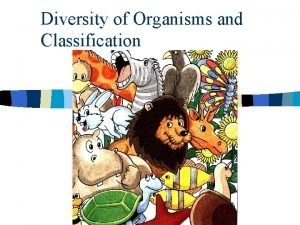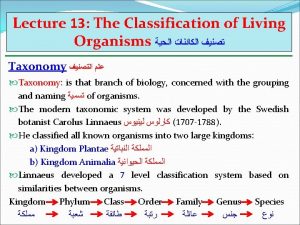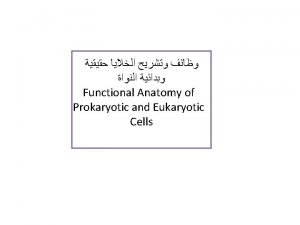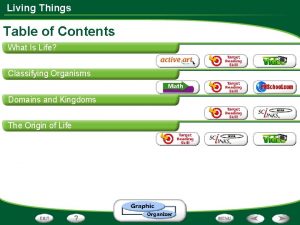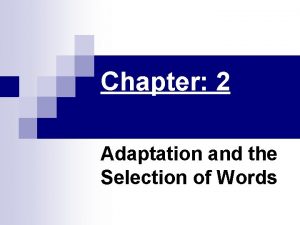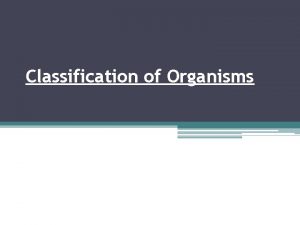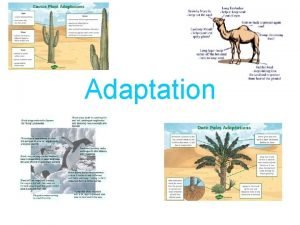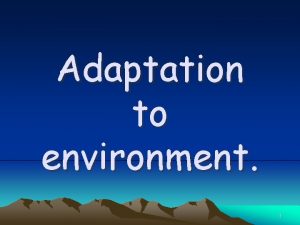Classification of Organisms Adaptation and Diversity 1 Classification








- Slides: 8

Classification of Organisms Adaptation and Diversity

1. Classification of organisms allows the identification of shared characteristics which reveals how organisms interact with the components of their ecosystem. 2. Taxonomy is a system for naming and classifying organisms. Taxonomy is hierarchical, with large groups at the top of the hierarchy and small groups at the bottom. Each group is defined by a set of characteristics that the organisms within it share.

King Phillip Can Only Find Green Socks 3. The highest and broadest level in the system for naming and classifying organisms is domain.

4. Each domain is characterized by the type of cell it is made of. There are two main types of cells. The first type of cell is a prokaryote. Prokaryotes are cells that have no cell nucleus or membrane bound organelles. The second type of cell is a eukaryote. Eukaryotes are cells that contain a nucleus and have membrane bound organelles.

Organisms that can use the sun’s energy to produce their own food are called autotrophs. Autotrophs use sunlight, water and carbon dioxide to form sugar, which they use in cellular respiration. The conversion of sunlight, water and carbon dioxide into sugar is known as photosynthesis. Examples include plants, algae, and some bacteria.

Organisms that cannot produce their own food through photosynthesis are called heterotrophs. Since heterotrophs cannot produce their own food, they rely on other organisms, both plants and animals for nutrition. Examples of heterotrophs are animals, fungi, and many types of bacteria

Domain Archea Archaebacteria (prokaryotes) Bacteria Eubacteria (prokaryotes) Eukarya Fungi Protists Animalia eukaryotes Plantae

A dichotomous key is a type of flow chart made up of questions or paired statements about an organism. Reproduction ● Asexual offspring arise from a single parent ● Sexual offspring arise from the mating of two parents




